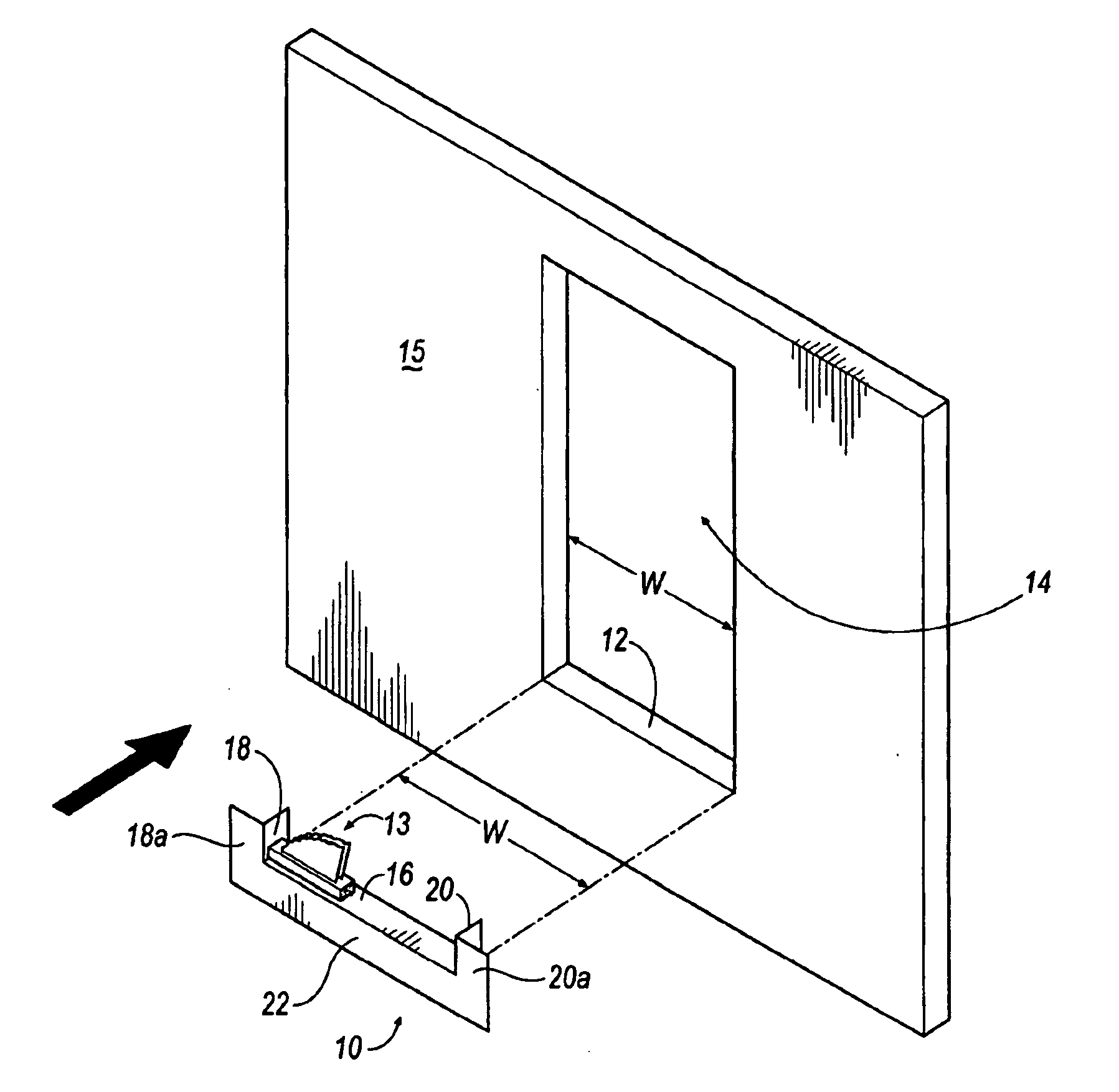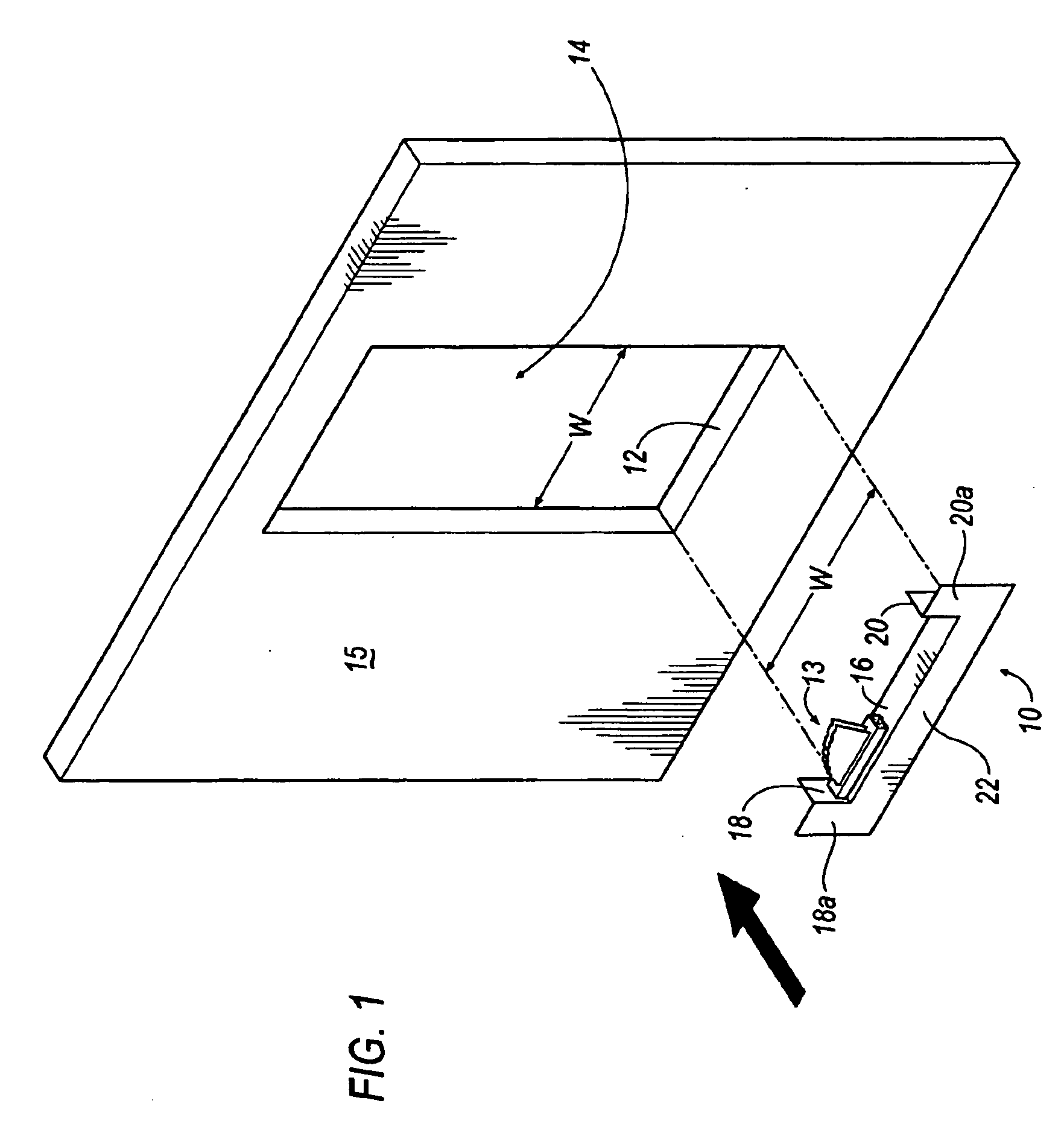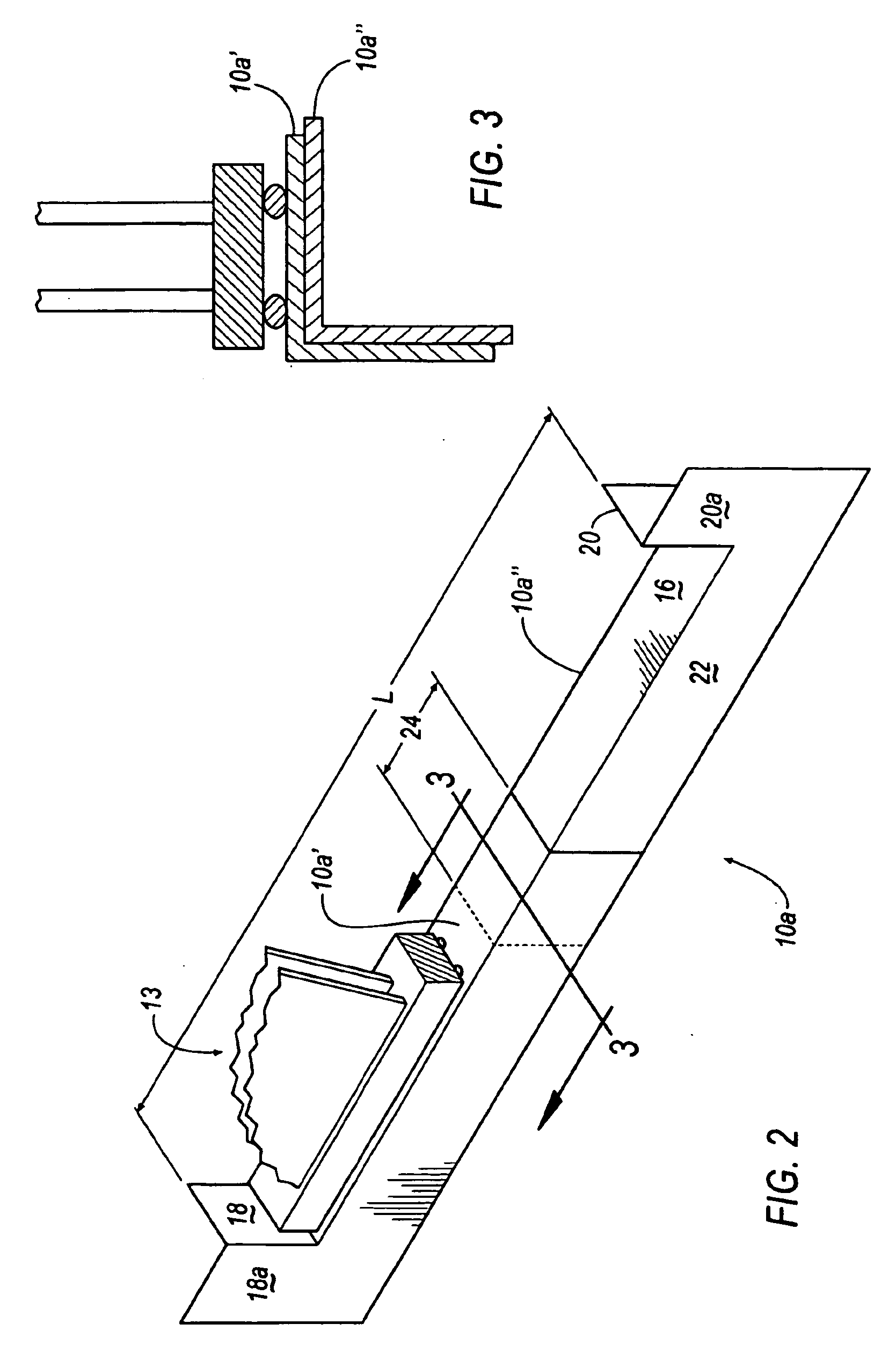Window sill flashing
a window sill and flashing technology, applied in the field of building materials, can solve the problems of adjacent ceilings, plastered walls, and the like, and the bottom portion of the window opening (called the sill) is susceptible to rotting, and the lik
- Summary
- Abstract
- Description
- Claims
- Application Information
AI Technical Summary
Benefits of technology
Problems solved by technology
Method used
Image
Examples
Embodiment Construction
[0020] Referring to FIG. 1, a window sill flashing (hereinafter referred to as “flashing”) 10 is generally shown according to an embodiment of the present invention. The flashing 10 is formed to fit within and snugly conform to a bottom portion 12 of a window opening 14 of a wall 15. Window opening 14 has a width W and is adapted to accept a window assembly 13. As illustrated, the face portion (or flange) 22 of flashing 10 is generally U-shaped and constructed as one piece. The flashing 10 comprises a base 16, a first side flange 18 integrally formed with base 16 at one end, a second side flange 20 integrally formed with base 16 at an opposite end, and a front flange 22 integrally formed with base 16. Preferably base 16, side flanges 18, 20 and front flange 22 are all vacuum formed from a common sheet. Front (U-shaped) flange 22 extends perpendicularly downward from an edge of base 16. First side flange 18 includes a front surface 18a and second side flange 20 includes a front surfa...
PUM
| Property | Measurement | Unit |
|---|---|---|
| thickness | aaaaa | aaaaa |
| width | aaaaa | aaaaa |
| thickness | aaaaa | aaaaa |
Abstract
Description
Claims
Application Information
 Login to View More
Login to View More - R&D
- Intellectual Property
- Life Sciences
- Materials
- Tech Scout
- Unparalleled Data Quality
- Higher Quality Content
- 60% Fewer Hallucinations
Browse by: Latest US Patents, China's latest patents, Technical Efficacy Thesaurus, Application Domain, Technology Topic, Popular Technical Reports.
© 2025 PatSnap. All rights reserved.Legal|Privacy policy|Modern Slavery Act Transparency Statement|Sitemap|About US| Contact US: help@patsnap.com



